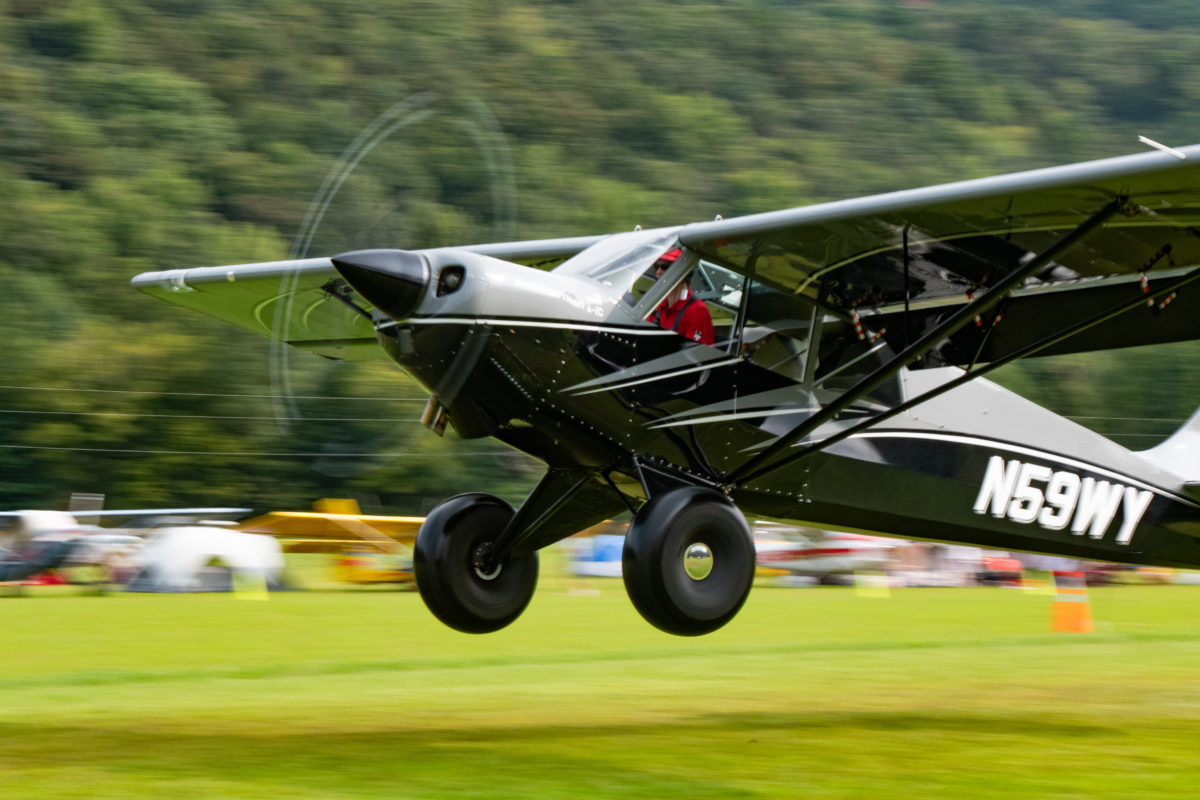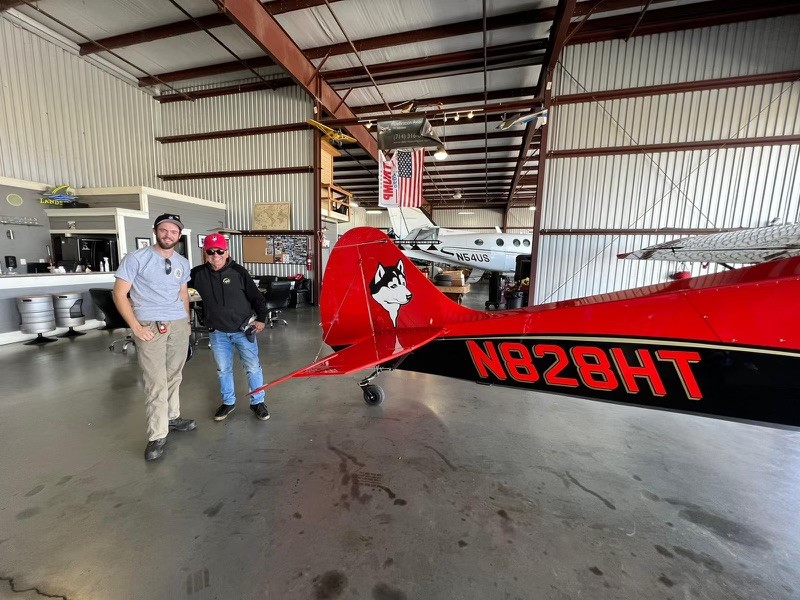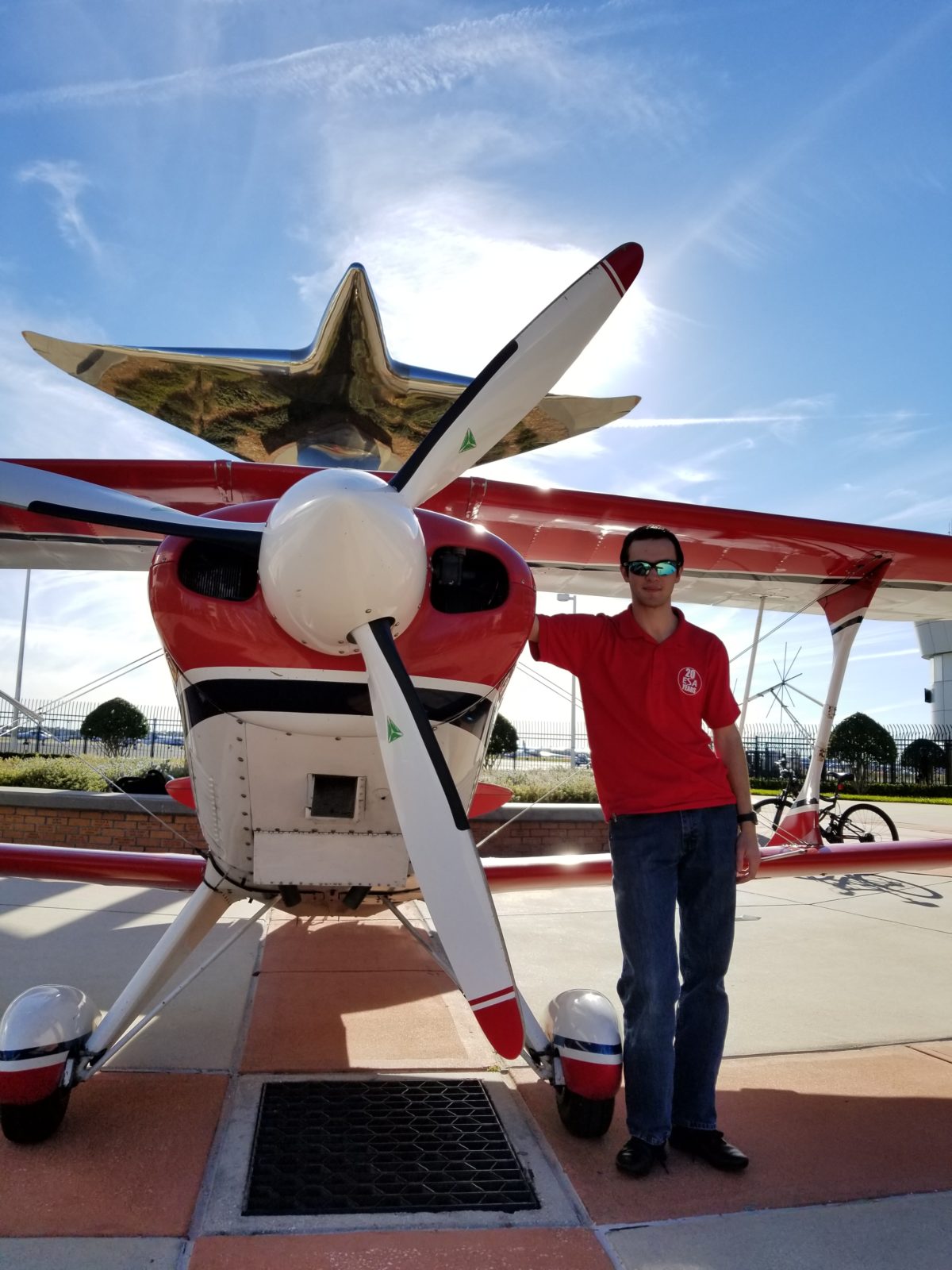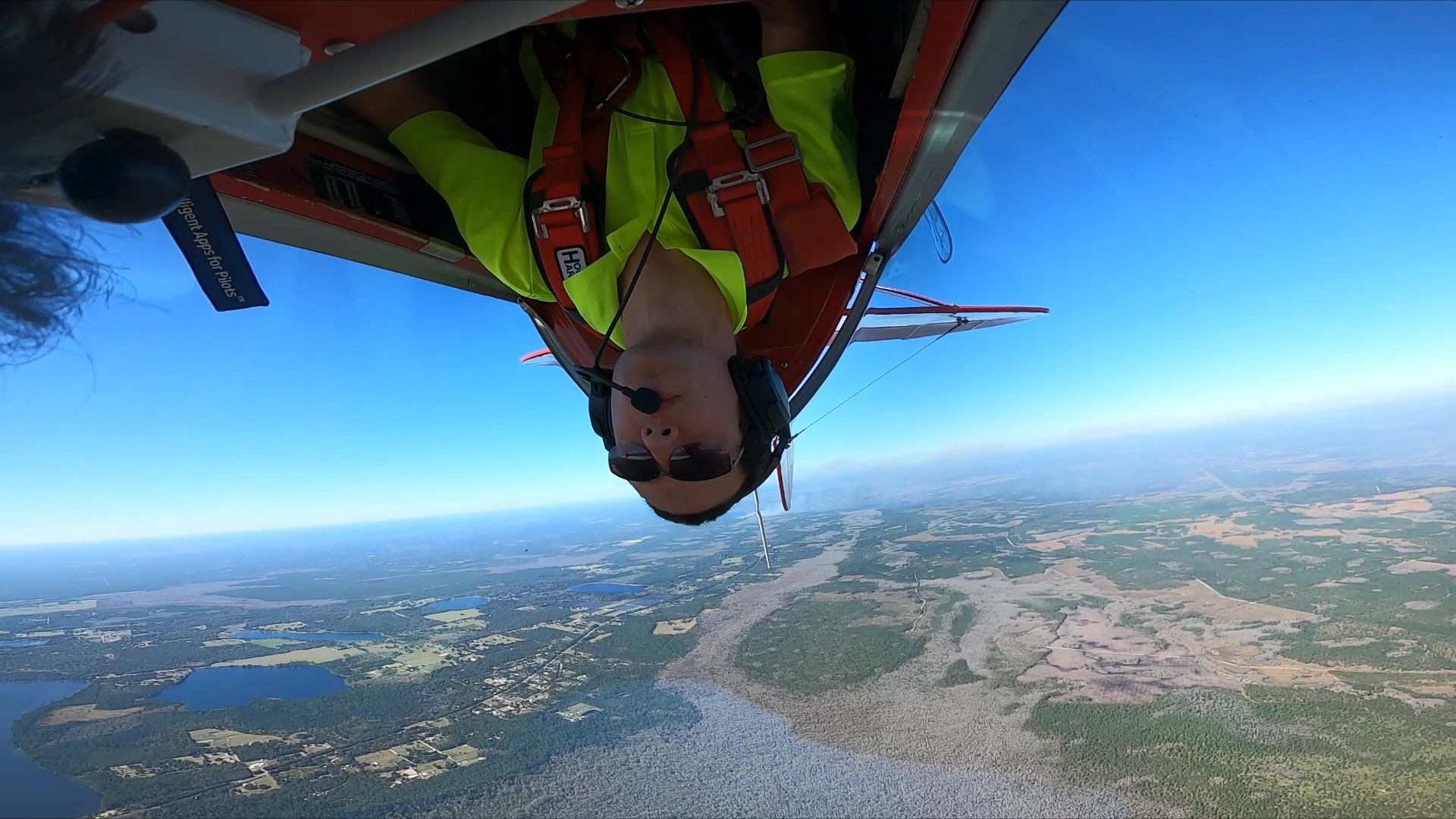“I want to do that,” is what Robert Drouin said as a 10-year-old when he watched aerobatics star Rob Holland fly upside down in his Ultimate 260. At 15, Drouin started learning to fly his father’s Cessna 172, and he earned his license on his 17th birthday.
For a few years, new ratings were a birthday tradition. Drouin (’20) added his seaplane license at 18, instrument rating at 19 and certified flight instructor status as a junior at Embry-Riddle.
“I fly almost every birthday if the weather permits,” Drouin says.
His full-time position as an engineer and test pilot at Aviat Aircraft doesn’t give him much time to tackle more ratings, but he’s still moving forward. He does fit in some aerobatics, with snap rolls and tumbles his favorite maneuvers “because they show what a plane can really do.”
Working for Aviat — a company founded in Afton, Wyoming, in 1991 — he is part of a team that produces about 30 single-engine, sport and utility aircraft a year. The company sells the Pitts S-2C, Husky and the Aviat Aircraft Eagle home-built kit.
“On a good day, I hop in the Pitts and burn a bunch of fuel and smoke oil, putting on an air show for the town, doing flight tests.”
— Robert Drouin (’20), engineer and test pilot
Drouin’s original focus was on becoming a pilot. However, high school classes in engineering fundamentals and robotics shifted his college search to schools where he could fly and earn an aerospace engineering degree. He entered Embry-Riddle in 2016 in Daytona Beach and soon started flying with the Eagle Sport Aviation Club, which flew out of Spruce Creek and then DeLand. The club flew the Aeronca L-16, a Piper PA-28 Cherokee and a Pitts S2B.
The Pitts became his favorite ride and part of his future. “Every time I hopped into the Pitts,” he says, “I looked down at the stick and saw the name Aviat.”
He emailed Aviat requesting an internship and a few months later, toured the factory and accepted an offer during spring break. He returned to Aviat after earning his bachelor’s in Aeronautical Engineering in 2020. He credits his highly responsible position to the trust Aviat developed in him over his internship and the fact that he was flying and instructing in Pitts from the age of 20.
A job that tapped his love of flight and engineering challenges is a perfect fit for Drouin. He also handles customer service, liaising with the Federal Aviation Administration and training.
“We are a small company – only about 55 employees. I get to use a broad range of skills as an engineer and a pilot. At a major manufacturer, I might be plopped behind a desk designing one small thing. On a good day, I hop in the Pitts and burn a bunch of fuel and smoke oil, putting on an air show for the town doing flight tests. Then I hop in a Husky for more flight tests.”

He doesn’t escape desk duty entirely, answering customer emails about rigging, wiring and repairs a few hours a day. Later in the day, he meets with the drafter and engineer to monitor progress and address production issues.
Most afternoons will find him at “Husky Final,” the 3-acre production floor, where he focuses on inspections and preflight paperwork.
“If we’re good to go, I take a plane out for about an hour for my flight test and determine any changes we need to meet criteria or adjustments to give the pilot a better experience.”
One standard adjustment is an increase in the prop speed. “The standard prop spins 2650 rpms, which is perfectly legal. We want the best performance you can get out of the plane, so we turn it up to 2700 rpms.”
“I approve design modifications from about four of us and work on approvals with FAA,” he says. Feedback from owners influences some improvements, such as a more ergonomic positioning of the seat adjustment bar, which was inconvenient for taller pilots.
Another modification meant that Drouin worked with Garmin for about a year to incorporate a new autopilot. “I designed the brackets and pulleys, servos and interfaces.”
Flying an average of six hours in each plane prevents Drouin from getting too attached. “Producing a Husky takes about four months. By the time they are recognizable, with paint on, they are already sold. I start thinking of them as Chip’s plane or Ken’s plane.”
His screensaver suggests there is one exception: 59 Whiskey Yankee.
“We build a couple of spec demo planes a year,” he says. “I flew 59 Whiskey Yankee in ArkanSTOL, a backcountry aviation competition in Arkansas. I traveled to Arkansas and Texas, so I had about 15 hours in the plane. It has the best setup I can think of for distance and backcountry flying.”

When a customer arrives to claim his plane, Drouin goes over the bill of sale, registration paperwork and completes an acceptance flight. He may also serve as a Husky trainer.
“If you can fly a Cessna 140 or 180, a Husky is a breeze, but if you have only flown a Skyhawk, this is a totally different animal,” he says. “We recommend a week of training for owners who are unfamiliar with tailwheels. That allows them to get a tailwheel endorsement and raise their comfort level with the aircraft. The first hour or two can be frustrating, but it becomes really fun as you realize how capable your plane is.”
He is not a fan of tailwheel simulators and recommends interested pilots experience the real thing. “The best way to get the feel is to take a flight in a Decathlon, Citabria, Piper Super Cub or Husky if one is available.”
Today, Drouin is a company test pilot. His next goal is to become a flight test Designated Engineering Representative recognized by the FAA. “It requires eight years of experience, but my four years as an aerospace engineer count toward that total.”
He also hopes to fly his own plane in aerobatics competitions and air shows.
During his 9-to-5, he gets to fly Pitts and Huskys and then work on making them deliver optimal performance. That’s a good day at the office for Robert Drouin.

